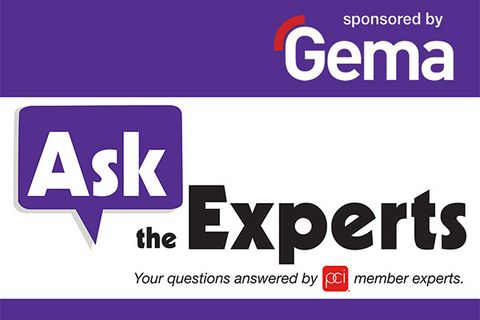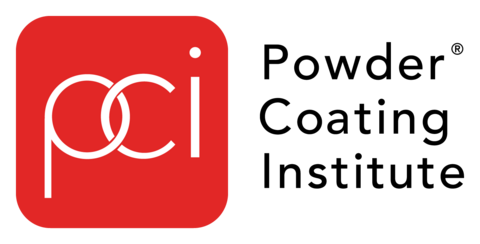

Ask the Experts
Gema is the proud sponsor of Powder Coated Tough magazine’s “Ask the Experts” question & answer feature. If you have a question, simply email it to asktheexperts(at)powdercoating.org and maybe your question will be in the next issue of Powder Coated Tough. Click here to see past issues of Powder Coated Tough magazine.
Gema Switzerland GmbH does not assume liability for the content of this page. The content is provided by PCI Powder Coating Institute and Powder Coated Tough magazine.
Recent Questions
Q1 I Weighing Volatility
I’ve been asked by our Environmental and Safety Department to provide information on the volatile content of the powder coating material used in our plant. After reviewing the Safety Data Sheet (SDS), I noticed that this information is not listed.
From my understanding, powder coatings typically contain very low or near-zero volatile organic compounds (VOCs). Is this the reason why the volatile content is not listed on the SDS? If not, could you please advise where I can find this information?
Answer:
You are correct that the volatiles in powder coatings are minimal, and as such, they are not typically listed on the Safety Data Sheet (SDS). If this information is required, specialized equipment is needed to accurately measure these small amounts. The use of analytical balances and a precisely controlled heat source means that this procedure is best suited for laboratory environments rather than production settings. The analytical balance used for this testing must be capable of weighing to a precision of ±0.0001 grams.
There is a specific test designed to quantify the percentage of volatile materials emitted during the curing cycle of powder coating. In this test, the sample is added to a tared aluminum dish and weighed. The dish is then baked, cooled in a desiccator, and reweighed. The volatile content is determined by calculating the difference in weight.
It is recommended that this test be conducted by the powder manufacturer or a qualified laboratory.
Q2 | Under Control
We currently operate a conveyorized powder coating line that includes a five-stage washer, dry-off oven, powder booths, automated powder application equipment, and a cure oven. As we are in the process of quoting new business, our potential clients have requested that we demonstrate the control of the powder coating system parameters. What exactly are the clients expecting from us?
Answer:
Manufacturing processes naturally exhibit variations that can impact the quality of the finished product. To understand the causes of these variations, manufacturers often turn to Statistical Process Control (SPC) methods. These methods help determine whether the processes are under control. Once any causes of variation are identified, corrective actions can be implemented to increase productivity, improve product quality, reduce rework or scrap, and lower operational costs. SPC techniques shift the focus of quality control from final inspection to ensuring quality during or before production.
Statistical Process Control (SPC) is defined as the application of statistical techniques to monitor and analyze a process and its outputs. In most manufacturing settings, it is impractical to measure every parameter that could affect production performance. Therefore, sampling methods are used to monitor specific characteristics of the process. By employing well-conceived sampling techniques, manufacturers can predict the output of a process. This cycle of sampling, predicting, feedback, and control is at the core of SPC.
Feedback and control play crucial roles when applying SPC to powder coating. The powder coating process consists of several stages, including part pretreatment, powder application, and curing. By identifying and monitoring variations at each stage, appropriate controls can be implemented to minimize the risk of producing defective powder coated parts. Moreover, SPC allows for more consistent application of powder coatings to precise standards, which helps reduce reject rates and improves production efficiency. With fewer rejects and more efficient coating processes, production costs can be significantly reduced. Identifying and understanding the sources of variation enables manufacturers to take targeted actions to eliminate or minimize these discrepancies.
Data collected for statistical analysis in SPC can be categorized into two main types: variable data and attribute data. Variable data is obtained by measurement, and it applies to parameters such as chemical concentrations, temperatures, spray pressures, KV readings, phosphate coating weights, and coating thickness. To analyze variable data, X-bar (average) and R (range) charts are commonly used. R charts track the range of values, while X-bar charts plot the average values. The two charts have a similar format, and in some cases, the lower control limit (LCL) may be omitted from the R chart.
On the other hand, attribute data is gathered by counting occurrences. For example, counting the number of defective parts in a sample represents attribute data. Several types of attribute charts are available for statistical control, with the most commonly used being P charts and NP charts. NP charts are employed when sample sizes are consistent, allowing the count of non-conforming (defective) units. When sample sizes vary, P charts are used to track the proportion of nonconforming units, typically expressed as a percentage.
When establishing an SPC program for powder coating, it is vital to consider the entire production process. Begin by identifying each phase of the process, its key characteristics, and the current methods used to evaluate and control those characteristics. Analyze this information to pinpoint potential areas of variation that can be addressed through SPC. By using this data, you will be able to present to your existing customers and any potential customers that you have control of your processes.
Q3 | Hanging by a Thread
We are in the process of purchasing a new powder coating line for the parts that we fabricate. They include some small and large sheet metal products along with some structural steel frames. We have been told that to get the most throughput through the system we need to have new hangers and racks manufactured to fit our line. What are the most important items we need to consider when we are designing and fabricating them?
Answer:
For both safety and a successful coating process, it is crucial that the hangers are made from materials that effectively ground the parts, such as steel. The hangers must also have reliable contact points where the parts can hang securely. Ideally, the contact points should be sharp, as any powder buildup will be scraped off when the part is hung.
The hangers must be designed to hold the part securely in place during normal conveyor movement, particularly during the powder coating process. Any erratic motion could lead to defects or inconsistent coating thickness. Key considerations include the impact of conveyor turns, inclines, declines, and stopping/starting actions. The hangers must also be capable of supporting the weight of the parts without causing deflection or excessive vibration.
The spacing between the hanger hook points on the conveyor should be sufficient to prevent parts from touching each other, especially during vertical elevation changes or when navigating horizontal turns. It’s important to account for the possibility that the outside corners of the parts could touch during turns, or that the center of gravity could cause a part to swing and collide with another. Additionally, the design should allow for proper drainage of the parts as they move through the washer. Ensuring that water or pretreatment coating material can drain off the parts prevents pooling or contamination.
If multiple parts are hung on a rack, the design must ensure that no part is shielded from the powder guns due to interference from the hanger or other parts. Any obstruction could lead to bare spots or other defects in the coating. The hanger design should also consider ease of loading and unloading to reduce labor requirements. Hangers that are difficult to load can result in improperly aligned parts or parts that do not make proper contact with the hanger points.
While many off-the-shelf hangers and racks are available at lower costs, custom-designed hangers may sometimes be necessary to meet specific operational needs. If you opt to design your own hangers or racks, it’s important to strike a balance. Avoid overengineering—hangers should be as universal as possible to accommodate multiple part types. This reduces the need for custom hangers for each specific part, saving time and cost in the long run.
Q4 | Cutting Out Outgas
I have a few questions about zirconium pretreatment on hot dipped galvanized pipe. Should I be outgassing the pipe before the zirconium application? Also, do you need to outgas again after the application? Your input would be greatly appreciated.
Answer:
Hot dip preparation is challenging due to the galvanized steel and the sealer used. It is recommended to use a fluoride etch prior to applying zirconium to help break down the surface as part of the preparation process for the zirconium application. Additionally, it is recommended to outgas the part after the pretreatment washer, in the dry-off oven, before applying the powder. Typically, the part temperature should be approximately 50 degrees Fahrenheit above the powder cure temperature to ensure that the part will not outgas during the cure cycle, which would cause defects. Following these guidelines will eliminate any outgassing issues typically experienced when coating over cold hot dipped galvanized parts.
Archives:
2025
| Ask the Experts: Powder Coated Tough, Jan/Feb 2025 issues | |
| Ask the Experts: Powder Coated Tough, Mar/Apr 2025 issues |
2024
2023
2022
